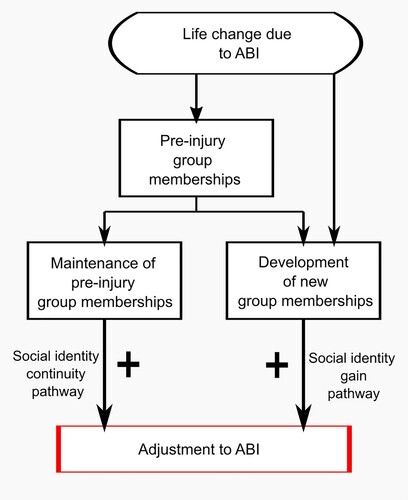Figures & data
Figure 1. Pathways through which social group memberships can influence adjustment to an ABI, as hypothesized by SIMIC, adapted from Haslam et al. (Citation2018, p. 238).

Table 1. Mean, standard deviation, minimum, and maximum of main study variables.
Table 2. Correlations between PTG at time 1 and time 2 with other study related variables (N = 36).
Figure 2. While the greater number of groups people maintained from pre- to post-injury predicted greater connectedness with these groups, there was no relationship between groups maintained and PTG at time 2, controlling for specified covariates.

Figure 3. Number of new groups was indirectly associated with PTG at time 2, via connectedness with these new groups, controlling for pre-injury groups, maintained groups, time since injury, age, and PTG at time 1.

Data availability statement
The data that support the findings of this study are available from the corresponding author upon request.
